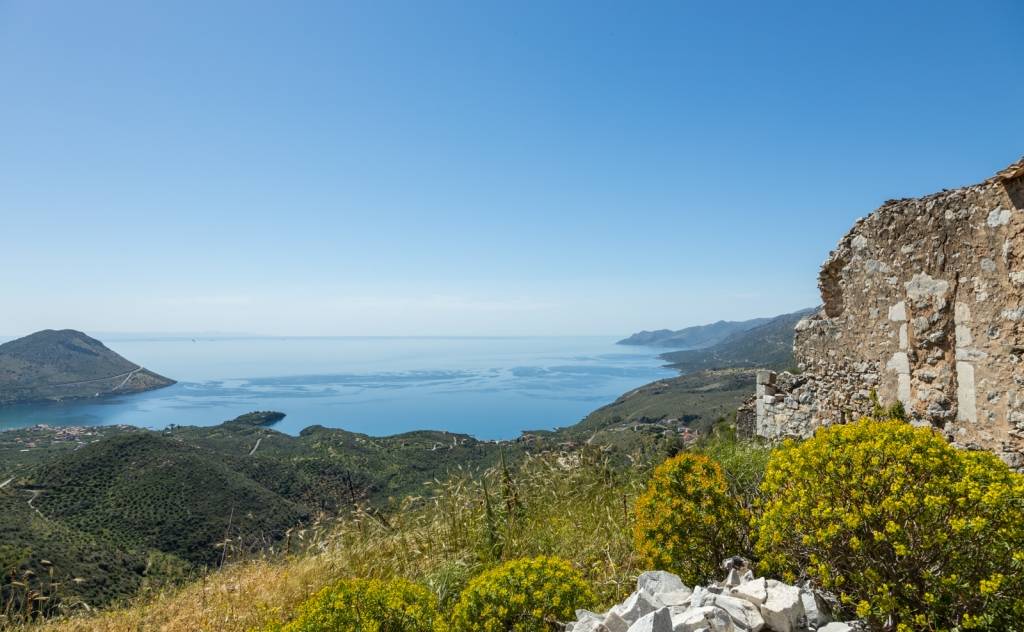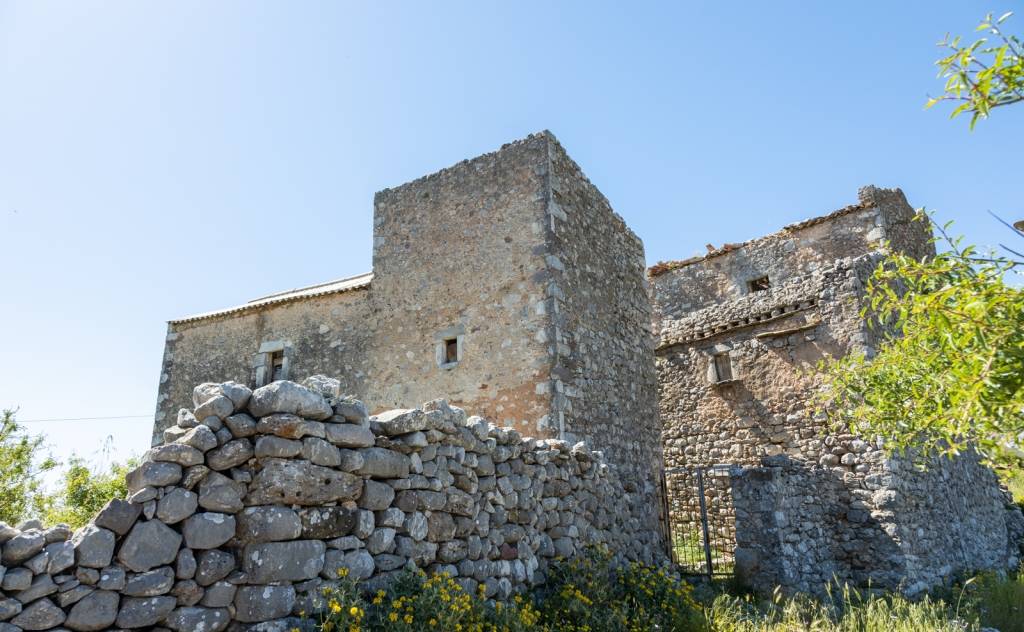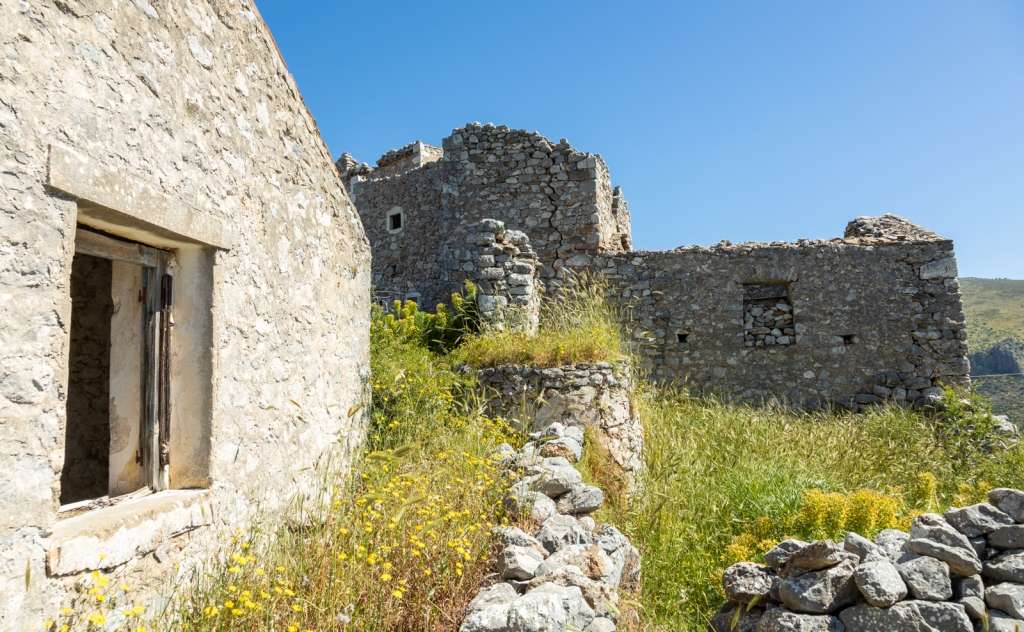Castle of Kolokythia or Castle of Loukadika
The Castle of Kolokythia, also known as Loukadika Castle, dominates the top of the settlement. The first impression given to visitors is that these are simply houses built in such a way as to form a stronghold. Basically, these are tower houses built on a pre-existing medieval settlement and a Byzantine castle. The Acropolis of ancient Tefthroni, the famous city of Eleftherolakones (free Laconians), once stood. The city sank in the Kolokythia Gulf after an earthquake that took place in the 3rd century BC.
Some travellers describe Loukadika as an "air" castle. It is built to the south of the three hills. Visitors can see traces of buildings and remnants of its fortifications from the Byzantine and Post-Byzantine periods and the Frankish occupation. In 1245, after the Frankish conquest of the Peloponnese and the distribution of the occupied castles, settlements and areas, the Castle of Kolokythia (Castro di Cholochitia) was given as a fief to Count Lucas. From what appears, later, the castle and the settlement were named Loukades or Loukadika because of the count's name. The Castle is also found in castle catalogues of 1463 as Cocchochia sive Colochita and, later on, in nautical maps. P. Zerlentis, in his book "Taxis Hierarchical", writes that Loukadika is mentioned, in 1467, as Castro di Cholochitia, which belonged to the Venetians. Finally, the travel text of Turk Evliya Gelebi of 1670 mentions the whole region of Tefthroni as Colocitolar.






